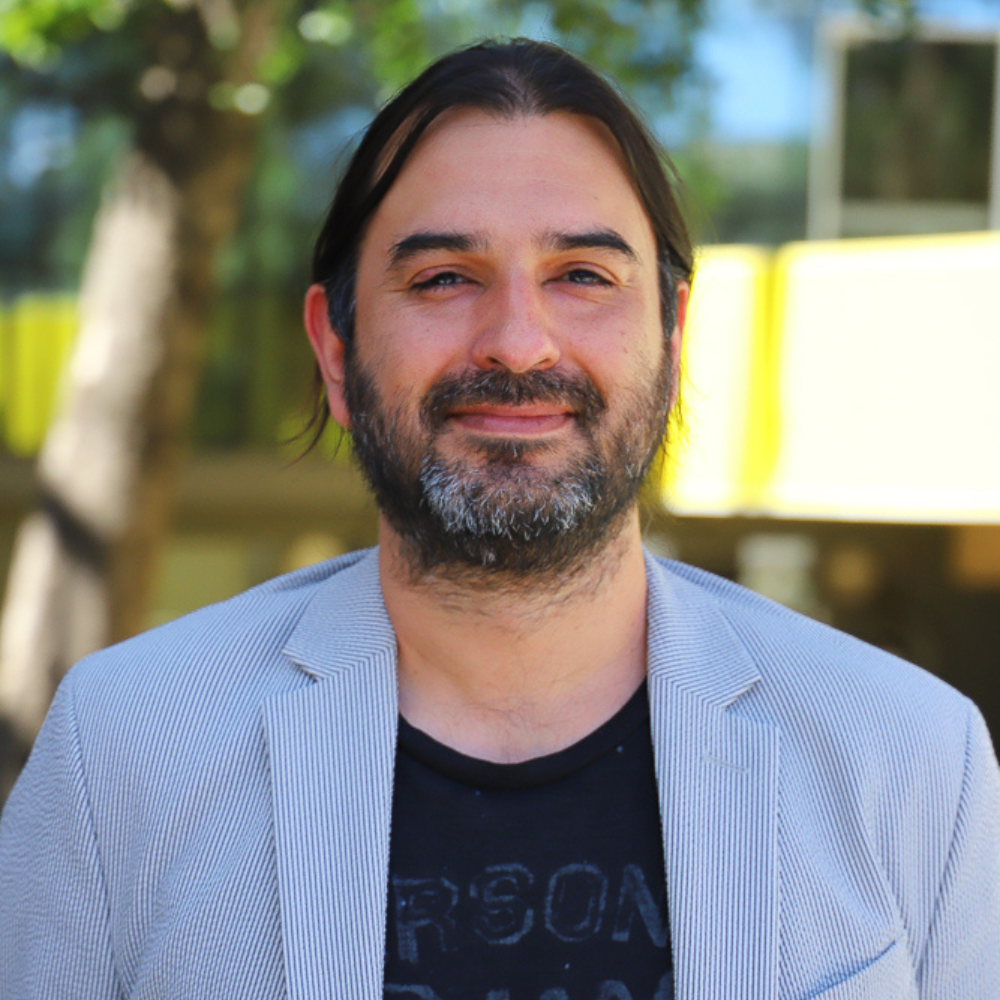15
David Espíndola Rojas ● Profesor Asociado

Doctorado en Ciencias con Mención en Física, Universidad de Santiago de Chile
Licenciado Física Aplicada, Universidad de Santiago de Chile
Descripción
Dr. David Espíndola received his Doctoral degree in physics from the Universidad de Santiago de Chile, Santiago, Chile, in 2012. As part of his Ph.D. dissertation, he studied the interaction wave- particle in granular materials. He pursued post-doctoral research at the Institut d’Alembert, Sorbonne Université, Paris, France, where he started conducting research on medical ultrasound. He also held a post-doctoral position with The University of North Carolina at Chapel Hill, Chapel Hill, NC, USA, where he also was a Research Assistant Professor. He is currently an Assistant Professor at the Instituto de Ciencias de la Ingeniería at the Universidad de O'Higgins in Chile. His research interests are the linear and nonlinear elastic wave propagation in soft materials, the ultrasound super-resolution imaging and the elasto-acoustics in complex medium.
7
- REVISTA IEEE Access
- 2022
Characterization of Direct Localization Algorithms for Ultrasound Super-Resolution Imaging in a Multibubble Environment: A Numerical and Experimental Study
• Aline Xavier • Héctor Alarcón • David Espíndola •
- REVISTA 2021 IEEE UFFC Latin America Ultrasonics Symposium (LAUS)
- 2021
Comparison of localization methods in super-resolution imaging
• David Espíndola •
- REVISTA IEEE Transactions on Ultrasonics, Ferroelectrics, and Frequency Control
- 2021
Modeling ultrasound propagation in the moving brain: applications to shear shock waves and traumatic brain injury
• Sandhya Chandrasekaran • Bharat B. Tripathi • David Espíndola • Gianmarco F. Pinton •
- REVISTA Biomedical Physics & Engineering Express
- 2020
Quantitative sub-resolution blood velocity estimation using ultrasound localization microscopy ex-vivo and in-vivo
• David Espíndola • Ryan DeRutier • Francisco Santibanez • Paul A Dayton • Gianmarco Pinton
- REVISTA International Journal for Numerical Methods in Biomedical Engineering
- 2019
Piecewise parabolic method for propagation of shear shock waves in relaxing soft solids: One-dimensional case
• Bharat Tripathi • David Espíndola • Gianmarco Pinton •
- REVISTA Journal of Computational Physics
- 2019
Modeling and simulations of two dimensional propagation of shear shock waves in relaxing soft solids
• David Espíndola • Bharat Tripathi • Gianmarco Pinton •
- REVISTA IEEE Transactions on Ultrasonics, Ferroelectrics, and Frequency Control
- 2019
Super-Resolution Imaging Through the Human Skull
• Danai E. Soulioti • David Espíndola • Paul A. Dayton • Gianmarco F. Pinton •
- REVISTA Physical Review Applied
- 2018
Focusing of Shear Shock Waves
• David Espíndola • Bruno Giammarinaro • Francoise Couvlouvrat • Gianmarco Pinton •
- REVISTA Physical Review E
- 2018
Amplification of stick-slip events through lubricated contacts in consolidated granular media
• David Espíndola • Belfor Galaz • Francisco Melo Hurtado •
- REVISTA Shock Waves
- 2017
Piecewise parabolic method for simulating one-dimensional shear shock wave propagation in tissue-mimicking phantoms
• David Espíndola • Bharat B. Tripathi • Gianmarco Pinton •
- REVISTA Physical Review Applied
- 2017
Shear Shock Waves Observed in the Brain
• David Espíndola • Stephen Lee • Gianmarco Pinton •
- REVISTA Theranostics
- 2017
3-D Ultrasound Localization Microscopy for Identifying Microvascular Morphology Features of Tumor Angiogenesis at a Resolution Beyond the Diffraction Limit of Conventional Ultrasound
• David Espíndola • Fanglue Lin • Sarah E. Shelton • Juan D. Rojas • Gianmarco Pinton
- REVISTA Physical Review E
- 2016
Creep of sound paths in consolidated granular material detected through coda wave interferometry
• David Espíndola • Belfor Galaz • Francisco Melo Hurtado •
- REVISTA Physical Review E
- 2013
Effect of packing fraction on shear band formation in a granular material forced by a penetrometer
• David Espíndola • Franco Tapia • Eugenio Hamm • Francisco Melo Hurtado •
- REVISTA Physical Review Letters
- 2012
Ultrasound induces aging in granular materials
• David Espíndola • Belfor Galaz • Francisco Melo Hurtado •
- Enero 2022
- - Enero 2026
- Diciembre 2021
- - Noviembre 2023
- Noviembre 2021
Investigador/a Responsable
- Julio 2021
- - Julio 2023
Investigador/a Responsable
- Abril 2021
- - Marzo 2024
- Noviembre 2020
- - Octubre 2021
Co-Investigador/aCo-Investigador/a
- Abril 2019
- - Marzo 2023